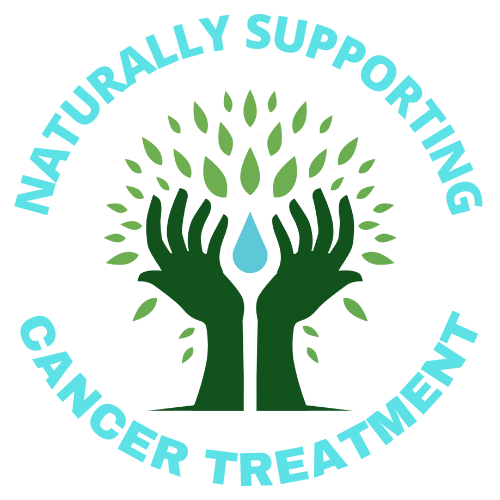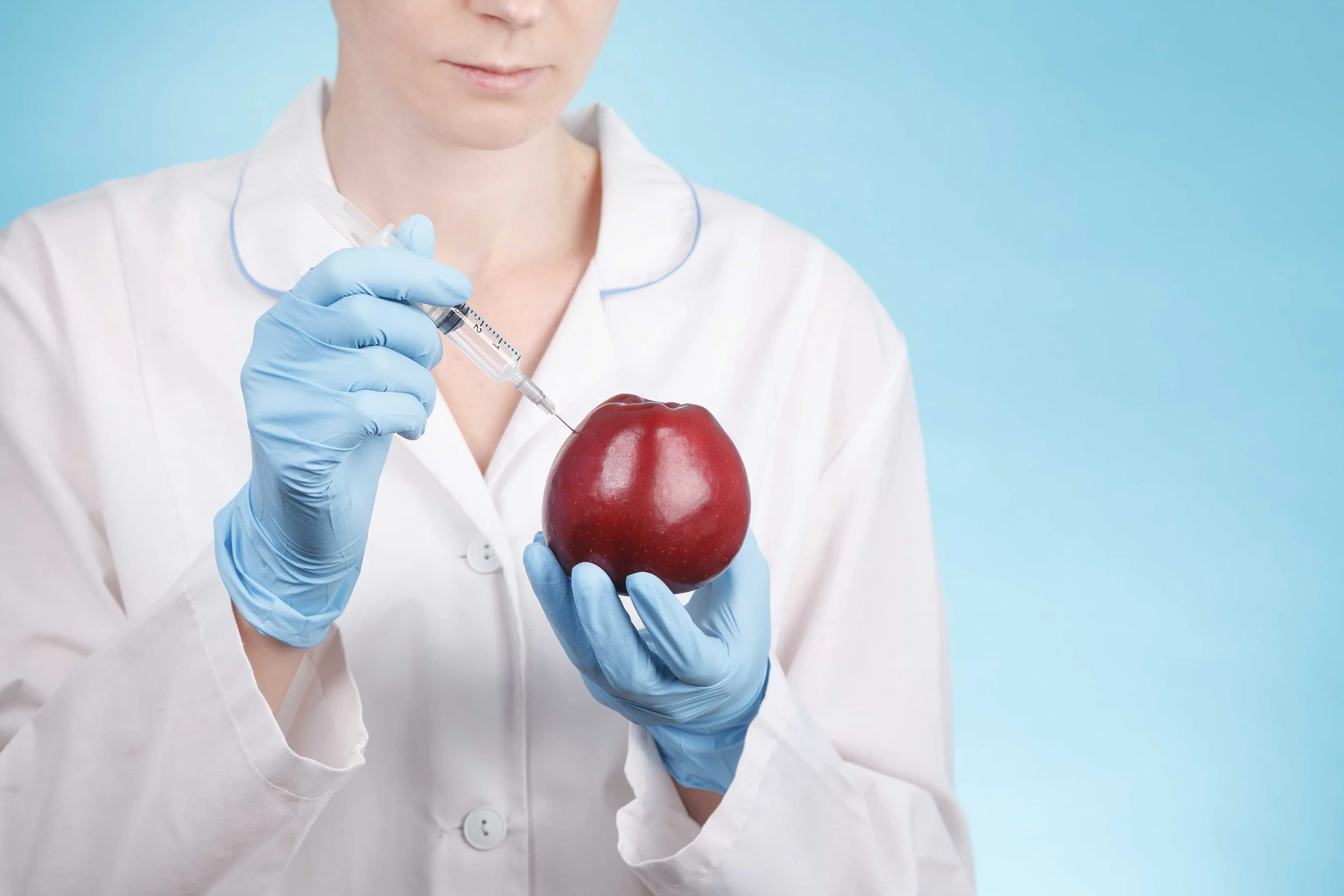Safety of GMO foods
Safety of GMO foods
What are GMO foods?
GMO stands for Genetically Modified Organisms and the term GMO is used almost exclusively to describe crops. The way it’s done is to introduce foreign genes into a plant to gain some kind of ‘benefit’. For example, they’re often used to make plants resistant to weed killers. That means farmers can use weed killers liberally without worrying about killing the crop.
GMO food risks
Companies have developed GMOs to resist 3 weed killers of particular concern:
glyphosate
gluphosinate
Cry1Ab, also known as Bt.
Glyphosate
I have a particular problem with glyphosate, commonly used in Roundup®, because I am fairly sure that it contributed to my own cancer. I had a particularly invasive weed that I spent several months trying to eradicate with Roundup® not too long before I got sick with leukaemia. Glyphosate has been classified as a probable carcinogen by the International Agency for Research on Cancer (IARC) and has been associated with non-Hodgkin lymphoma, another type of blood cancer (1).
Monsanto developed Roundup®. In July 2021, Bayer, who bought Monsanto in 2018, withdrew the sale of glyphosate-containing products to US home gardeners. They did so because of a class action by around 30,000 customers who believed that it had caused their cancers (2). Sadly, it’s still sold in other countries and is used heavily in agriculture worldwide.
Gluphosinate
Gluphosinate is another herbicide that’s used on crops, not only whilst they’re growing but also to dry them out before harvesting.
The children of men who used gluphosinate in their work had a higher risk of congenital deformities (3). Research in rats also showed evidence that it caused liver damage (4).
Cry1Ab
Cry1Ab is a protein/toxin derived from a gene in the bacterium called Bacillus thuringiensis, commonly known as Bt. The protein is an insecticide and it was initially inserted into a maize (corn) genome to protect the maize against butterfly infestation (5).
Cry1Ab has had very little testing done on the safety of it in humans. However, a review in 2017 raised a number of potential risks (6). They found evidence that the Cry toxins bind to the surface of the gut in mice, which could have a detrimental effect. And there was also evidence that Cry toxins can have a damaging effect on the production of blood cells. Rats fed with aubergines with the Cry1Ab toxin had higher white blood cell counts than normal rats, suggesting an immune reaction, and their liver enzymes were raised, suggesting that there was liver toxicity. They were looking particularly at soybeans. The seeds produced that contained Cry1Ab were also resistant to Roundup® and they were concerned that the two together might have a synergistic effect, boosting potential harmful effects.
GMO foods list
Glyphosate is used in the growing of most non-organic soybeans all over the world. That’s a particular problem because soy is used extensively in the manufacture of processed foods. You only have to check the list of ingredients on packaged foods to find soy listed. Each time that you eat one of those foods, you’re effectively eating glyphosate.
Canola seeds are also GMO to make them resistant to glyphosate, so canola oil will also contain it unless it’s organic (7).
Cotton seeds are GMO too. So non-organic cotton will probably contain glyphosate, and because it’s worn next to your skin, the glyphosate is readily absorbed. (7).
Seeds resistant to gluphosinate are available for almonds, apples, bananas, canola, citrus, corn, cotton, oil palm, olives, pistachios, soybeans, strawberries and grapes (8).
Crops that have the Cry1Ab gene inserted into them are corn, cotton, eggplant, potatoes, soybeans and tomato. Corn is particularly problematic, as this is often fed to livestock and the toxins are therefore transferred to the meat. So this is yet another reason to buy grass-fed or organic meat.
Detoxing GMO foods
If you’ve been consuming GMO foods, there are various ways that you can help to remove their toxic effects.
Eat more fibre
Fibre is great for helping the digestive system to work more effectively, and most toxins are removed in body waste. Pectin-rich foods are high in fibre and pectin can detoxify the gut successfully. The following foods are high in pectin:
citrus fruits, especially the white pith
green beans
carrots
potatoes with their skin
parsnips
peas
apples
berries
underripe bananas
apricots
peaches
cherries
grapes.
Don’t forget to buy organic versions, otherwise you may be eating the very foods that you’re trying to detoxify from!
Modified citrus pectin is another alternative that you could use if you want a supplement. This doesn’t just remove toxins from the gut: it’s modified to make it sufficiently small to enter the bloodstream and do its work there too. It has a particularly helpful role in cancer because it helps to prevent metastasis, helps reduce cancer cells’ resistance to chemo, and has anti-cancer effects that help to stop cancer cells’ growth (9). These effects have been demonstrated in clinical trials (9).
Sweat out your toxins
An often overlooked method of detoxing is via sweat, but it can be very effective.
I highly recommend getting your heart rate up to increase the production of sweat. Yes, I’m talking about exercise. 😊 It’s an effective detoxing method and it has multiple other effects too. It’s been shown to improve cancer survival significantly, improves mood, reduces stress and, if you do it outdoors, you also improve your vitamin D levels, which is important for cancer patients.
If for some reason you can’t exercise, another effective method is to take a sauna. This doesn’t just get you sweating, but it’s also very relaxing.
Drink plenty of water
Water will help to flush out your kidneys, another way that the body rids itself of toxins. Just make sure that you drink filtered water from an effective water filter. You don’t want to drink more toxins in tap water.
Eat plenty of probiotic, fermented foods
You can improve your ability to remove toxins in the gut by adding ‘good’ bacteria in the form of probiotic foods. This is particularly helpful for the Cry1Ab toxin because it’s bacterial. Many probiotic foods also contain high amounts of fibre; think of sauerkraut and kimchi, which are both made from cabbage. But other fermented products such as plain organic yoghurt, kefir, kombucha, miso, soft cheeses and organic tempeh are also helpful.
Probiotics also help cancer patients in a number of other ways. You can find out more about them in my book which you can buy by clicking the button below.
References
1. Schinasi L, Leon M. Non-Hodgkin Lymphoma and Occupational Exposure to Agricultural Pesticide Chemical Groups and Active Ingredients: A Systematic Review and Meta-Analysis. International Journal of Environmental Research and Public Health. 2014;11(4):4449-4527. doi:10.3390/ijerph110404449
2. Bayer Global. Bayer Provides Update on Path to Closure of Roundup™ Litigation. Bayer Global. https://www.bayer.com/media/en-us/bayer-provides-update-on-path-to-closure-of-rounduptm-litigation/. Published 2021. Accessed 16 July 2022.
3. García AM, Benavides FG, Fletcher T, Orts E. Paternal exposure to pesticides and congenital malformations. Scandinavian Journal of Work, Environment & Health. 1998;24(6):473-480. doi:10.5271/sjweh.371
4. Sharma P, Bhat B, Chacko KM. A 90 day oral toxicity of glufosinate ammonium in Wistar rats: biochemical and histopathological investigation of liver. Semantic Scholar. 2017.
5. Aris A, Leblanc S. Maternal and fetal exposure to pesticides associated to genetically modified foods in Eastern Townships of Quebec, Canada. Reproductive Toxicology. 2011;31(4):528-533. doi:10.1016/j.reprotox.2011.02.004
6. Then C, Bauer-Panskus A. Possible health impacts of BT toxins and residues from spraying with complementary herbicides in genetically engineered soybeans and risk assessment as performed by the European Food Safety Authority EFSA. Environmental Sciences Europe. 2017;29(1):1. doi:10.1186/s12302-016-0099-0
7. Bayer Crop Science Australia. Herbicide with Plantshield®. Roundup Ready Herbicide with PLANTSHIELD | Bayer Crop Science. https://www.crop.bayer.com.au/products/herbicides/roundup-ready-herbicide-with-plantshield. Published 2022. Accessed September 16, 2022.
8. BASF. Benefits for the crop. Benefits For The Crop. https://agriculture.basf.com/global/en/innovations-for-agriculture/innovation-for-herbicides/glufosinate-ammonium/benefits/benefits-for-the-crops.html. Published 2022. Accessed September 16, 2022.
9. Eliaz I, Raz A. Pleiotropic effects of modified citrus pectin. Nutrients. 2019;11(11):2619. doi:10.3390/nu11112619

